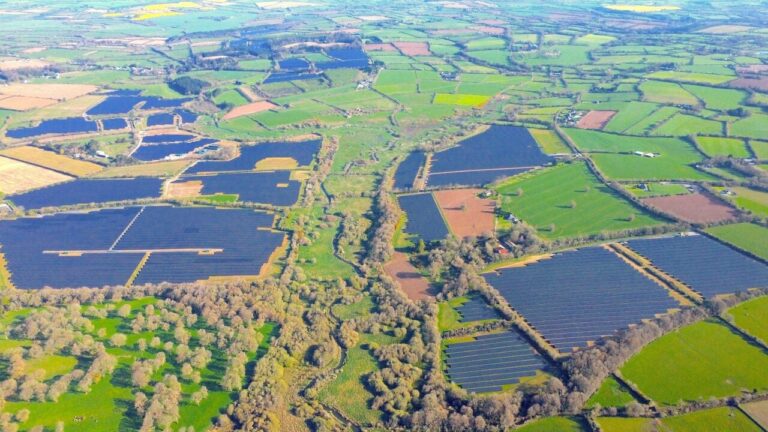Preliminary data from grid operator EirGrid shows that a third of electricity in the Republic of Ireland came from renewable sources in June.
Electricity-scale solar supplied 4.4% of Ireland’s electricity demand, a new high for the country. Actual solar energy generation is likely higher, as the 110 GWh of energy generation only came from grid-scale solar developments; According to the Irish Solar Energy Association (ISEA), 94,000 Irish homes are equipped with solar panels, amounting to a capacity of 373 MW.
EirGrid is working to achieve government targets of achieving 80% of Ireland’s energy from renewable sources by 2030. With 25.26% of total system demand met by wind generation and some further input from hydropower and biomass, 33.53% of renewables were met in June. of the Irish question.
Eirgrid is also responsible for the electricity grid in Northern Ireland through a separate, independent entity, and these figures refer to the Republic of Ireland only.
Charlie McGee, system operations manager at EirGrid, said: “Solar energy generation is of course always at its strongest during the summer, but in June the output was particularly high, with solar energy playing an increasingly important role in our efforts to get more renewable electricity into the system.
“June was also another strong month for wind energy, and this is now the third time that wind generation has exceeded the 600 GWh mark in the month of June, even as wind speeds decrease during the summer months. This is because there is more generation capacity on the system.”
Currently, Ireland’s electricity grid can handle a maximum of 75% of electricity from renewable sources at any one time, a measure known as the system non-synchronous penetration limit (SNSP). EirGrid says it aims to further increase the SNSP limit.
Battery energy storage projects are one way to accelerate the transition to a cleaner electricity grid, giving electric systems more flexibility as they work to improve grid infrastructure. Market research from Solar Media shows that the total operational energy storage capacity in Ireland is over 700 MWh, of which 36 MWh comes from co-located storage capacity with solar sites. The storage capacity next to the solar market has a pipeline of 1.5 GW/2.4 GWh, which is steadily increasing.
That said, according to market consultancy Cornwall Insight, a ‘policy vacuum’ for long-term energy storage (LDES) in the country is threatening Ireland’s renewable energy potential. LDES is seen as key to balancing the grid’s growing renewable generation, such as wind, over several days rather than just hours once their share of the load reaches a critical mass. As such, the technology is seen as a crucial part of Net Zero.
This article was originally published on our sister site, Current±.


